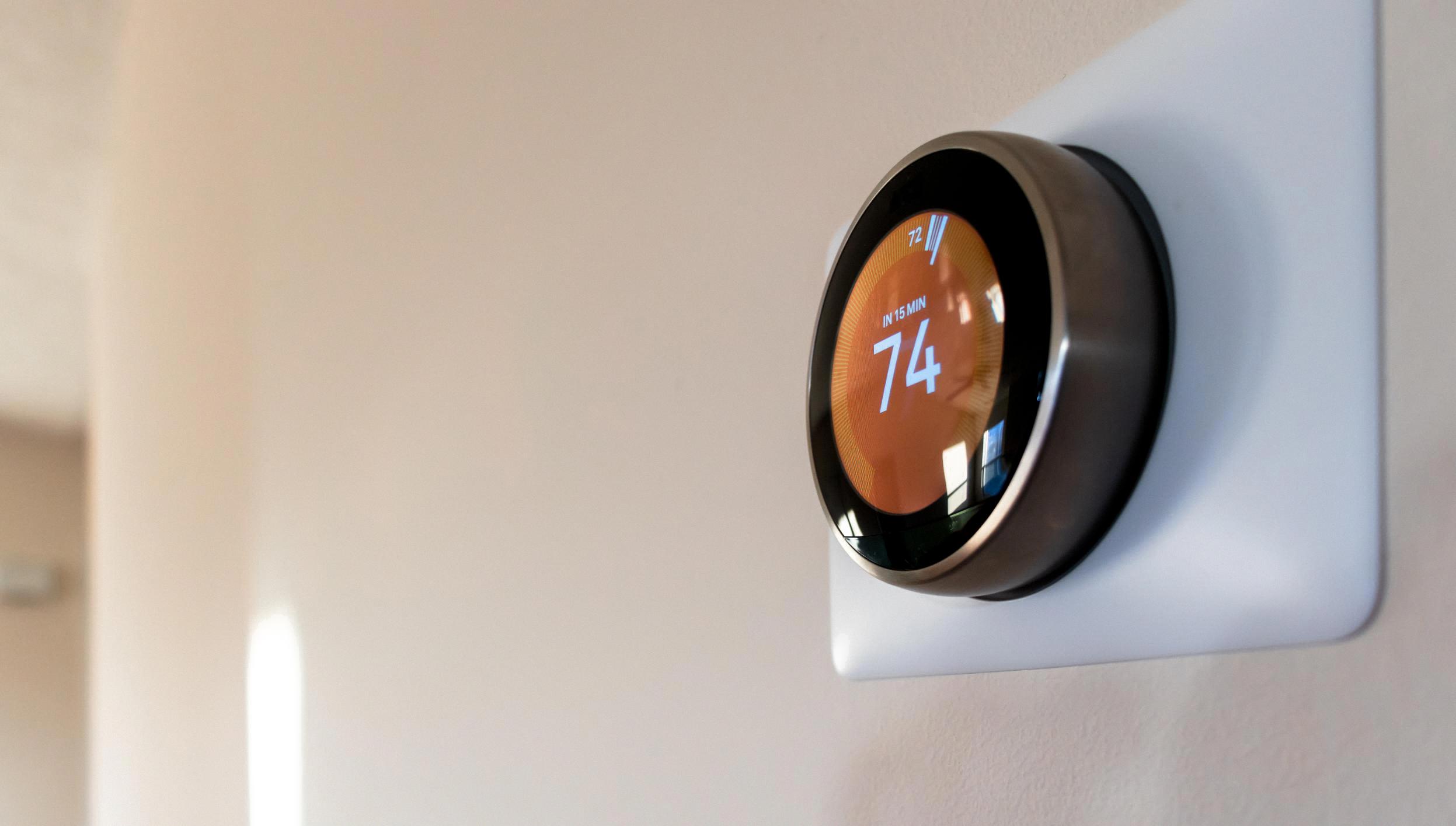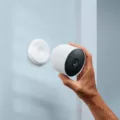The Nest Thermostat is a popular smart home device that allows you to control the temperature of your home with ease. However, like any other thermostat, it’s important to ensure that the sensor is properly calibrated for accurate temperature readings. In this article, we will discuss the importance of sensor placement and how to calibrate your Nest Thermostat for optimal performance.
One of the key factors that can affect the temperature readings of your Nest Thermostat is the placement of the sensor. If the sensor is located in an area that is exposed to extreme temperatures, such as near a window or in direct sunlight, it can result in inaccurate readings. This can cause your HVAC system to overheat or overcool your home, leading to discomfort and potential energy waste.
To check the sensor placement, you can open the Nest Thermostat and locate the screw in the center of a curved piece of thin metal inside the device. Using a screwdriver, turn the screw back and forth until you feel the contacts have opened. Wait for a few seconds and then turn the calibration screw again until the contacts have closed. This will help recalibrate the sensor for accurate temperature readings.
Another important aspect of the Nest Thermostat is the ability to set or change a sensor’s schedule. By opening the Nest app and tapping on the thermostat settings, you can access the sensor schedule. Here, you can choose which temperature sensor or the thermostat’s built-in sensors to use for each block of time. This allows you to prioritize certain areas of your home or specific sensors based on your preferences and needs.
When it comes to the accuracy of the Nest Thermostat, we found that it was consistently within a degree Fahrenheit of our control thermometer. However, it’s worth noting that the Nest Thermostat may round the temperature to the nearest degree, so slight variations may occur.
Proper sensor placement and calibration are essential for accurate temperature readings from your Nest Thermostat. By ensuring that the sensor is not exposed to extreme temperatures and following the calibration steps, you can optimize the performance of your thermostat and maintain a comfortable home environment. Additionally, utilizing the sensor schedule feature allows you to customize the temperature settings based on your specific needs.
Why is Your Nest Thermostat Not Reading the Correct Temperature?
There are several reasons why your Nest thermostat may not be reading the correct temperature. One possible cause is an issue with the sensor placement. The location of the sensor can greatly affect the temperature it reports back to your thermostat.
Here are some factors to consider when checking your sensor placement:
1. Proximity to heat sources: Make sure the sensor is not located near any heat-emitting devices, such as lamps, electronics, or appliances. These sources can artificially raise the temperature reading and cause your thermostat to overheat your home.
2. Exposure to direct sunlight: Avoid placing the sensor in direct sunlight or near windows that receive a lot of sunlight. Sunlight can cause the sensor to register higher temperatures, leading to inaccurate readings.
3. Drafty areas: If the sensor is located in a drafty area, such as near windows or doors, it may register lower temperatures than the rest of your home. This can result in your thermostat overcooling your home.
4. Distance from vents: Ensure that the sensor is not placed too close to air vents or registers. The airflow from these vents can impact the temperature reading and cause your thermostat to miscalculate the heating or cooling required.
5. Obstructions: Check for any obstructions around the sensor that could affect its accuracy. Furniture, curtains, or other objects may block the airflow or create temperature variances, leading to incorrect readings.
To ensure accurate temperature readings, consider repositioning your sensor to a more suitable location. Ideally, it should be placed in a central area of your home, away from any heat sources or direct sunlight. If you continue to experience issues with temperature accuracy, you may need to contact Nest customer support for further assistance.

How Do You Calibrate a Thermostat?
To calibrate a thermostat, follow these steps:
1. Locate the screw: Look for a small screw in the center of a curved piece of thin metal inside the thermostat device. This screw is usually used for calibration purposes.
2. Prepare a screwdriver: Get a screwdriver that fits the screw on the thermostat. This will be used to adjust the calibration.
3. Open the contacts: Use the screwdriver to turn the calibration screw back and forth. You should feel a slight resistance as you turn it. Keep turning until you feel that the contacts have opened. This means the circuit is no longer closed.
4. Wait: Wait for a few seconds to ensure that the contacts are fully open. This allows the thermostat to reset and recalibrate.
5. Close the contacts: After waiting, turn the calibration screw again with the screwdriver. Keep turning until you feel that the contacts have closed. This means the circuit is now closed again.
6. Test the thermostat: Once the contacts are closed, check if the thermostat is functioning correctly. It should accurately control the temperature as desired.
7. Fine-tuning: If the thermostat is not functioning properly or if it still appears to be inaccurate, you may need to repeat the calibration process, making small adjustments to the calibration screw until the desired accuracy is achieved.
Remember, the specific steps for calibrating a thermostat may vary depending on the make and model. It’s always a good idea to consult the manufacturer’s instructions or seek professional assistance if you are unsure.
How Do You Adjust Your Nest Temperature Sensor?
To adjust your Nest temperature sensor, follow these steps:
1. Open the Nest app on your mobile device.
2. Tap on the Settings icon.
3. On the home screen, select your thermostat.
4. Under the thermostat settings, choose “Manage sensors.”
5. Tap on “Sensor schedule.”
6. You will see blocks of time representing different periods of the day.
7. Select the temperature sensor you want to use for each block of time.
8. You can choose either a specific temperature sensor or the built-in sensors of your thermostat.
9. Repeat this process for each block of time to set or change the sensor schedule according to your preferences.
By adjusting the temperature sensor schedule, you can ensure that your Nest thermostat uses the appropriate sensor to measure and regulate the temperature in your home at different times of the day. This allows for more accurate and personalized temperature control based on your needs and preferences.
How Accurate is the Nest Thermostat?
The Nest thermostat is known for its accuracy in maintaining the desired temperature in your home. It uses advanced technology to monitor and adjust the temperature based on your preferences and the current conditions.
The accuracy of the Nest thermostat can be measured by comparing its readings with a control thermometer. In our tests, we found that the Nest thermostat was almost always within a degree Fahrenheit of our control thermometer. This indicates a high level of accuracy in temperature measurement.
It is worth noting that the Nest thermostat may sometimes appear to round the temperature to the nearest degree. For example, if the control thermometer shows a temperature of 72.5 degrees Fahrenheit, the Nest thermostat may display it as 73 degrees Fahrenheit. However, this rounding does not significantly affect the overall accuracy of the device.
The Nest thermostat’s accuracy is crucial in providing a comfortable living environment and helping to save energy by efficiently regulating the temperature. With its consistent performance and reliable temperature control, the Nest thermostat can be trusted to maintain the desired temperature in your home.
Conclusion
The Nest Thermostat is a reliable and accurate device for controlling the temperature in your home. Its sensor placement is crucial for accurate temperature readings, and it is important to ensure that the sensor is not placed in a location that can be affected by extreme temperatures, such as near a window. By checking and adjusting the sensor’s calibration screw, you can ensure that it is providing accurate temperature readings.
The Nest Thermostat also offers the option to set or change a sensor’s schedule, allowing you to customize the temperature settings for different times of the day. This can help optimize energy efficiency and comfort in your home.
In terms of temperature accuracy, the Nest Thermostat generally performs well, consistently staying within a degree Fahrenheit of control thermometers. Although it may sometimes round the temperature to the nearest degree, overall it provides reliable and consistent temperature readings.
The Nest Thermostat is a smart and efficient device for controlling the temperature in your home. Its sensor placement and calibration options allow for accurate temperature readings, while the ability to set sensor schedules adds flexibility and customization to your heating and cooling preferences.













